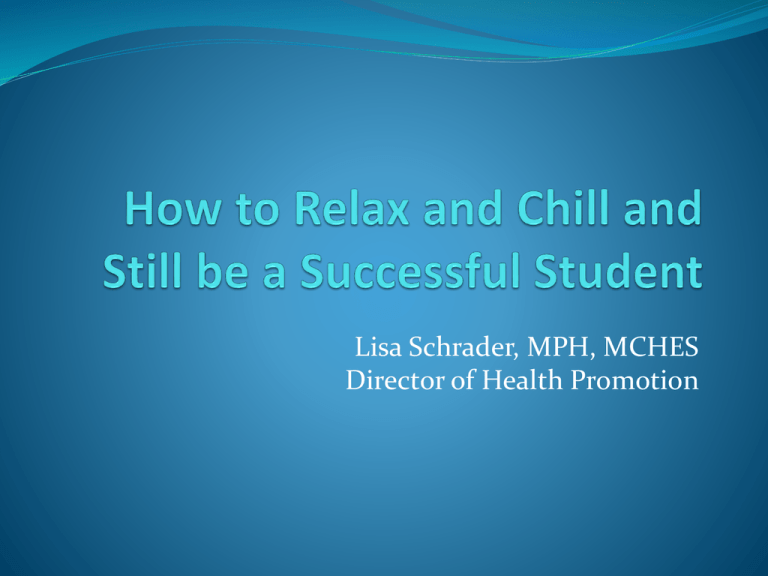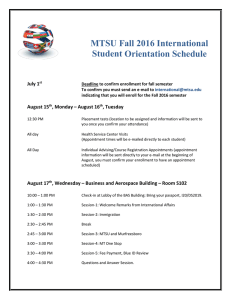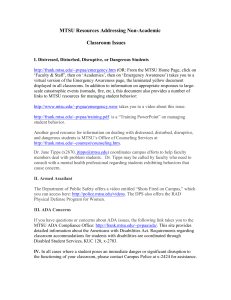Slide 1
advertisement

Lisa Schrader, MPH, MCHES Director of Health Promotion What does stress look like? Physical symptoms Behavioral symptoms Mental symptoms Emotional symptoms Stress Levels of MTSU Students 60 48.9 50 40.2 40 34.6 32.6 30 Males 16.5 20 11.6 10 0 4.2 0.8 No stress 6.5 4 Less than average stress Average stress More than Tremendous average stress stress Females What causes stress? Is stress bad? Stress and negative outcomes -1/3 of students reported that stress negatively impacted their academic performance -90% of doctor’s visits are stress-related -Stress is related to: Depression Diabetes Hair loss Heart disease Obesity Sexual dysfunction Ulcers Cancer Stress is actually neutral. “Stress is the body’s physical response to a perceived demand or threat.” Fight or flight (http://www.youtube.com/watch?v=oqRoAXXQ6OU&feature=related) Good Stress/ Bad Stress Performance Curve What can we do about it? Do something about the stressor Manage the symptoms Deep breathing Progressive relaxation Meditation Visualization Massage Exercise Humor Hobbies Long-term Stress Management Think positively Dispute irrational beliefs Build time management skills Practice assertive communication Talk things out with someone Eat well Be physically active Sleep Eliminate or reduce alcohol, tobacco, drug use Impact on Sleep Quality vs. Quantity Stages of sleep REM- where we dream & where memories and learning are processed Stage 4- deep sleep Effects of altered sleep Too little REM- sleepiness, anxiety, irritability Too much REM- fatigue Campus Resources: Counseling Services, KUC 326S Health Services, REC www.mtsu.edu/healthservices Health Promotion 615-494-8704 lisa.schrader@mtsu.edu www.facebook.com/mthealthpromotion Thank you! Questions?











